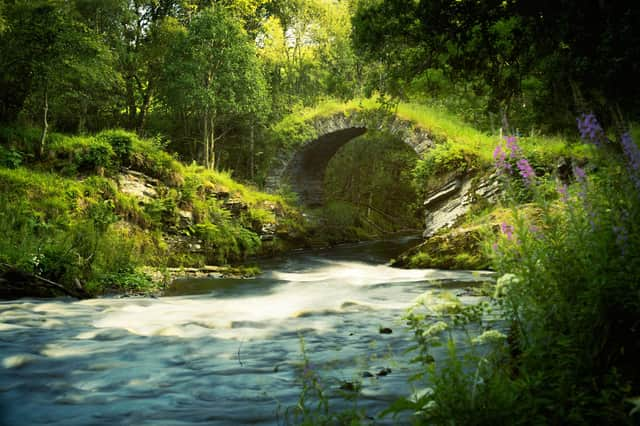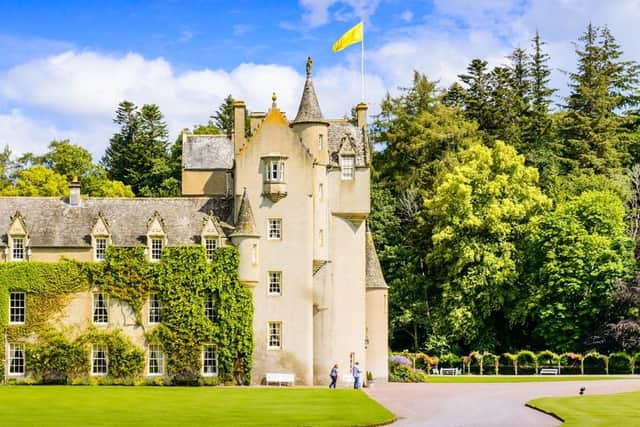Whisky galore: discover Speyside on the NE250


While there is much celebration in Scotland of the water of life, in this part of the world the Spey is quite simply the river of life.
As we toured the coasts of Aberdeenshire and Moray on the North East 250, we followed the story of how the North Sea shaped life and livelihoods over hundreds of years. Now, as our journey continues, we come up close to the all-powerful waterway of the Spey and its deep fortune-giving properties.
From Elgin, we take the A941 and sit back as the meandering road peaks and dips into Speyside as glimpses of cascading river begin to flicker by.
Whisky and salmon
The River Spey, the fastest flowing river in Scotland, is central to both the whisky production and salmon fishing that define this area. The river source is found more than 1,000 feet up in the Monadhliath Mountains, the river picking up its mighty energy as it tumbles down through the hills.
The winter snow feeds the Spey and the geography through which it runs – in sections it falls an average 12 feet per mile – forges its power, with this waterway a fitting home to the Atlantic Salmon, otherwise known as the King of Fish.
At Craigellachie, the full impact of the river emerges as it meets the Fiddich, with it taking master engineer Thomas Telford to build a bridge capable of standing firm against the thundering water force. Today, it remains the oldest surviving monumental cast iron bridge in the country.


Traditional crafts
The bridge itself is a powerful symbol of Speyside, with the village playing an all-important role in Scotland’s whisky industry. You’ll find the Macallan Distillery to the west of the village and to the south, the Speyside Cooperage, where you will find yourself up close against traditional craftsmanship that sits at the heart of whisky business.
Here, a tour allows you to see the work of the coopers, each who repair up to 15 to 30 casks a day, the sound of the hammer and driver at work all around as old barrels - supplied by the Kentucky bourbon industry – reconditioned in order to store and mature Scotland’s best spirits.
It’s interesting to see the handiwork, the craftsmanship and the raw labour at the heart of the global whisky industry and the process at work at the cooperage is little changed by time, although some modern equipment now handles part of the process to spare the workers the toughest aspects of the job.
Each year, the cooperage produces and repairs nearly 150,000 oak casks that support whisky distilleries in Speyside, across Scotland and indeed the world, with apprenticeships here still highly sought after.
Head west on the A95 and the journey into Speyside goes deeper and follows, roughly speaking, the course of this great river.
The pretty village of Aberlour sits right on the riverbank, as does the village distillery, where whisky has been made for around 200 years with the help of water pulled from St Drostan’s Well.
Adversity and innovation
During World War Two, when production routinely stopped and started, locals smuggled the wash from the distillery up the Aberlour Burn and made their own whisky under the Linn Falls. If you fancy leaving the car behind for a couple of hours, a rewarding and easy walk will take you up to the falls, an idyllic spot surrounded by mature woodland which has attracted new popularity as an outdoor swimming spot of late.
It’s also worth noting that the Spey Way walking route can lead you on some beautiful paths by the river and offers those touring the NE250 some time to get up closer to this gorgeous natural environment.
History, with a modern twist
But, for the next stretch, we will follow the river on the A95 and head for Ballindalloch Castle.
On the way, an interesting stop can be made at the home of the Inveravon Pictish Stones, which are now beautifully housed in the vestibule of a little kirk. Dating to sometime between 600 and 800 AD, the four stones possibly indicate an earlier chapel on the site, or a Pictish settlement tucked down near the water.
At Ballindalloch Castle, a genuine welcome is felt. Ballindalloch tells of history but it also tells a very personal story of family. Of course, castles have stories of inheritance and acquisition through their very fabric, but Ballindalloch prides itself on being an open, family home as much as a historic attraction and country business.
The lands were granted to the ancestors of present-day Laird, Guy Macpherson-Grant, who set up the NE250, some 500 years ago and today he lives here with his wife Victoria and their daughters. Much of the castle is opened up to visitors, who will wander in and out of rooms dotted with personal effects – such as family photographs, clothes and toys – and individual style. The gardens here are joyful, with the rock garden a riot of summer colour and the laburnum arch which leads into the castle grounds offering the prettiest of welcomes.
After a day following this glorious river, it’s time to stop at the Delnashaugh Hotel, a country inn which sits on the edge of the castle’s wooded glens. For centuries, it has been welcoming weary travellers and here was a perfect place to relax into some down-to-earth hospitality, a square meal and a walk down by the river, where silent pools give way to that now familiar sound of the rushing Spey. A dram or two might well have been in order.
Go your own way
Made up of six engaging and exciting sections, the North East 250 is perfect for a short break, or explore each section individually as a day out – it’s a route planned with flexibility in mind.
You can choose to follow the route clockwise or anti-clockwise, or plan your own adventure and Go Your Own Way. Where will you go?
Find out more and plan your next road trip today by clicking here.